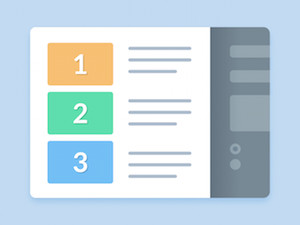
How to Disassemble Printed Wiring Boards

General treatment information for PWBs.
From dismantling an end-of-life-computer the printed wiring boards (PWB) represent the most valuable fraction. They contain several base, precious and special metals, that can be recovered by specialized metal refineries. With regard to their content of precious metals, different qualities of PWBs exist. A possible way to determine their grade (quality) is the gold content.
On the other hand, PWBs also contain several toxic substances like heavy metals or flame retardants. A major release of hazardous substances can be caused by an inappropriate treatment of the PWBs, e.g. uncontrolled wet chemical processes, incineration, etc. Such processes present a high risk of losing value and usually imply harms to human health and the environment. Thus these processes have to be avoided.
Before a pre-processing is performed, it is helpful to check the precise conditions of acceptance of the purchaser. Often it is reasonable to sort the PWBs according to the different grades (qualities). To supply the boards to an integrated metal smelter, do not perform any further processes than described in the Guide for manual disassembly of PWBs. Especially an inaccurate crushing/shredding of the PWBs usually leads to a significant loss of precious metals and thus reduces the value of the fraction.
As described in the Guide for manual disassembly of PWBs, depending on the receiving smelter, a separation of the CPU from the PWB might be economically advantageous. Due to its high content of gold and silver, CPUs are well paid on the market.
Due to the complex composition of PWBs, high recovery rates of the metals contained therein can only be met by an appropriate treatment in specialized plants. Different technologies like pyrometallurgy, hydrometallurgy, electrometallurgy and a combination of those can be applied to recover the metals. Schluep et al. (2009) describes the different existing technologies and reasons why only integrated copper and precious metal smelter-refinery operations – which combine different of the above mentioned technologies – are able to cope with requirements like environmentally sound treatment, high recovery rates, industrial scale of application, etc. The main advantages of such combined plants are:
Here, it is therefore recommended to supply PWBs to integrated metal smelters on the global markets. As mentioned before, those facilities demand certain requisites for PWB supplies (grade quality, minimum lot, board upgrading, etc.). Due to requisites like minimum lot shipment, it might be necessary to supply lower volumes of PWB to an intermediary. However, it should be ensured that PWBs do not end up in an inappropriate treatment.
Integrated metal smelters determine the price of the PWBs mainly by their concentration of gold (Au), palladium (Pd), silver (Ag) and copper (Cu).
The below table gives an indication of the concentration of Ag, Au, Pd and platinum (Pt) for PWBs originating from different appliances.
| Equipment | Silver (g/t) | Gold (g/t) | Palladium (g/t) | Platinum (g/t) |
| Audio & Video Equipment | 674 | 31 | ||
| Radio Set | 520 | 68 | 8 | |
| DVD Player | 700 | 100 | 21 | |
| Personal Computer | 600-1000 | 81-600 | 90-100 | up to 40 |
| Keyboard & Mouse | 700 | 70 | 30 | |
| CRT Monitor | 150 | 9 | 3 | |
| LCD Monitor | 1300 | 490 | 99 | |
| Mobile Phone | 5540 | 980 | 285 | 7 |
| Small IT equipment | 5700 | 1300 | 470 |
In general, PWBs are preferably sold to refineries having high recovery rates and paying the best price for the material.
The following fractions contain either PWBs or special metals and can therefore be supplied to integrated metal smelters, too (to be clarified with the respective smelter):
Dismantling Guide for IT Equipment, which was elaborated within the SRI project and financially supported by SECO and UNIDO, June 2015
Past 24 Hours: 0
Past 7 Days: 1
Past 30 Days: 2
All Time: 534
